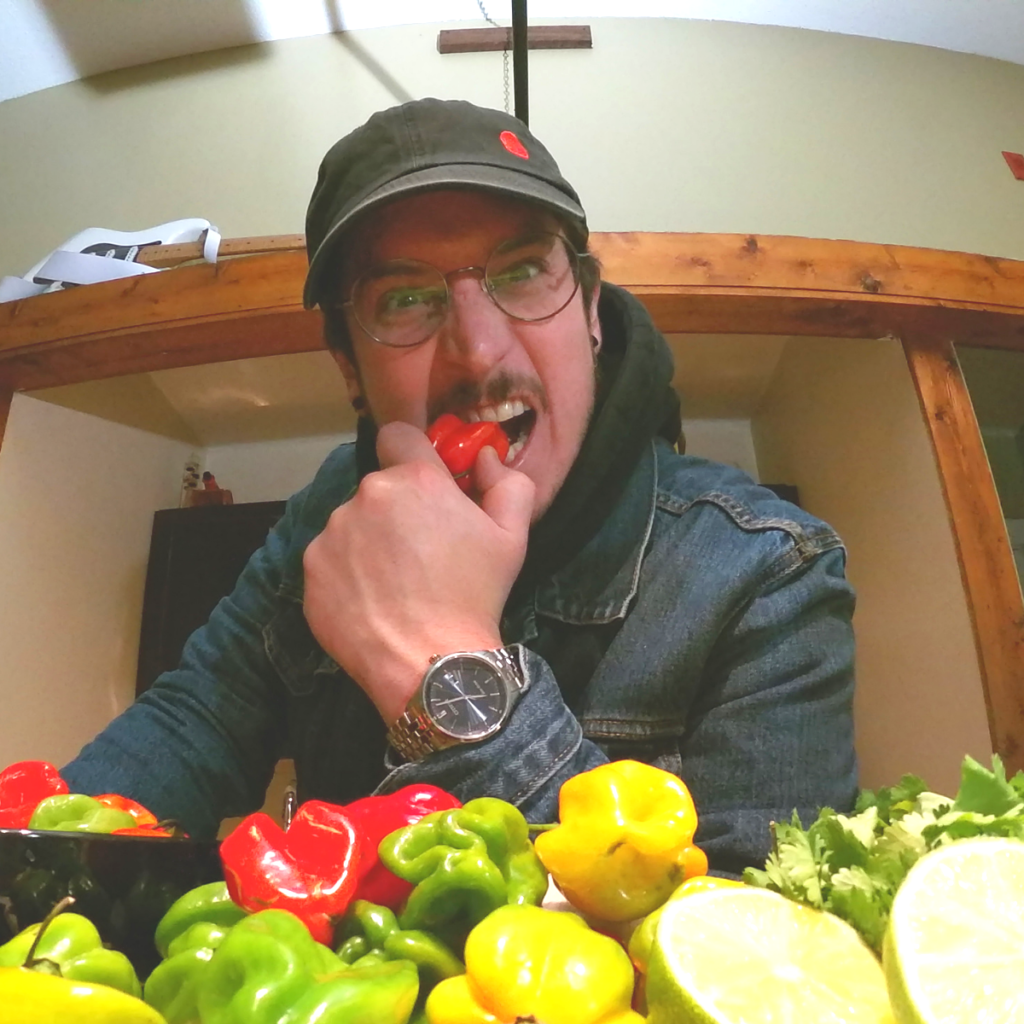Peppers are one of the most diverse and rewarding crops you can grow in your garden. From the sweet crunch of a fresh bell pepper to the fiery kick of a ghost pepper, the world of Capsicum offers an incredible range of flavors, shapes, colors, and heat levels. But with hundreds of varieties to choose from, it’s easy to get overwhelmed when deciding which ones to plant.
Whether you’re dreaming of homemade hot sauce, colorful stir-fries, or jars of pickled peppers, selecting the right varieties can make all the difference in your gardening and culinary success. Beyond just heat level, factors like flavor profile, plant size, growing season, and even your local climate should influence your choices.
In this article, we’ll walk you through how to match pepper varieties to your personal tastes and growing goals. Whether you’re a first-time grower or a chilihead expanding your pepper patch, this guide will help you choose the perfect peppers for your garden—and your plate.
- Know Your Goals: Why Are You Growing Peppers?
- Understanding Pepper Heat Levels: From Sweet to Superhot
- Best Pepper Flavors for Cooking: How to Match Varieties to Your Favorite Dishes
- Consider Your Garden Space and Growing Conditions
- Choose Between Open-Pollinated, Heirloom, and Hybrid Varieties
- Top Pepper Picks by Goal
- Final Tips for Selection
- Final Thoughts
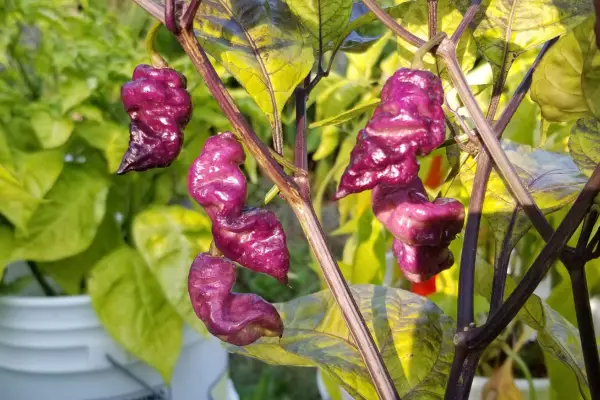
Know Your Goals: Why Are You Growing Peppers?
With so many pepper varieties out there, the best way to start narrowing your choices is by thinking about what you want from your pepper plants. Are you growing for flavor, heat, looks, or preservation? Clarifying your goals will help you choose varieties that truly deliver.
Craving Crunch?
If you love fresh, juicy peppers for salads, grilling, or stuffing, go for sweet and mild types like Bells, Banana peppers, or Poblano peppers. These are perfect for everyday kitchen use.
Making Hot Sauce or Ferments?
If you’re into blending up fiery sauces or fermenting spicy mash, you’ll want peppers with both heat and complexity—think habanero, ghost pepper, or aji varieties. The right pepper can transform your sauces from good to unforgettable.
Want to Dry Them for Spice?
Love making chili flakes, powders, or rubs? Choose thin-walled varieties that dry easily and pack flavor. Cayenne, paprika, and Thai peppers are great for spice projects.
Into Pickling?
For tangy, crunchy pickles, smaller peppers with thinner skins and just a little kick are best. Habaneros, pepperoncini, and Birds Eye peppers all shine in the brine.
Growing for Looks?
Some peppers are just plain pretty. If you want something eye-catching on the patio or in your garden, look for ornamental varieties—many of which are edible too (and surprisingly spicy!).
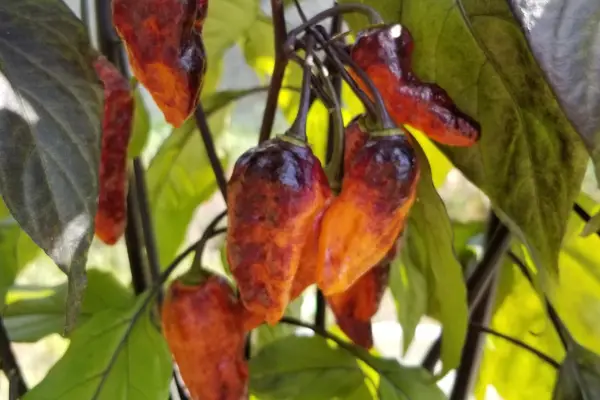
Love the Heat Challenge?
If you’re a heat-seeker chasing the next burn, superhots like Carolina Reaper, 7 Pot, or Trinidad Scorpion will keep things exciting. Just be prepared, they’re intense!
Understanding Pepper Heat Levels: From Sweet to Superhot
One of the most important factors in choosing which peppers to grow is heat level. Peppers range from completely sweet to blisteringly hot, and each level brings different flavors, uses, and growing experiences. Understanding the pepper heat scale will help you find varieties that suit your taste and spice tolerance.
Sweet Peppers (0 Scoville Heat Units)
These peppers have zero heat and are great for fresh eating, roasting, and stuffing. Common types include bell peppers, pimento, and sweet banana peppers. They’re perfect for kids, salads, or anyone looking to avoid spice.
Mild Peppers (100–1,000 SHU)
With just a hint of warmth, mild peppers like shishito, aji dulce, and some varieties of poblano offer great flavor without overpowering heat. They’re ideal for grilling, sautéing, or stuffing.
Medium Heat Peppers (1,000–15,000 SHU)
These peppers have a noticeable but manageable kick. Popular options include jalapeño, Hungarian wax, and Fresno. They’re versatile enough for salsas, pickling, and daily cooking.
Hot Peppers (15,000–100,000 SHU)
These bring serious spice without crossing into extreme territory. Varieties like cayenne, Thai chili, tabasco, and bird’s eye chili are favorites for hot sauces, drying, and spicing up stir-fries or stews.
Superhot Peppers (100,000+ SHU)
These peppers are not for the faint of heart. With names like ghost pepper, Carolina Reaper, and 7 Pot, superhots are known for their intense, lingering burn. They’re best used sparingly in sauces or powders, and always handled with caution.
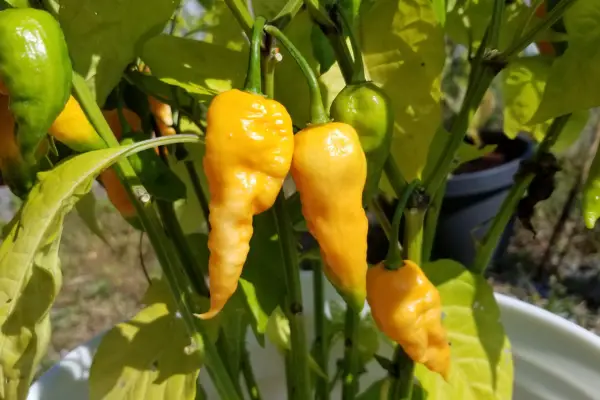
Best Pepper Flavors for Cooking: How to Match Varieties to Your Favorite Dishes
Choosing peppers based on heat is just the beginning—flavor is what truly makes them shine in the kitchen. Whether you’re cooking, fermenting, drying, or pickling, selecting peppers with the right flavor profile will elevate your culinary creations. From fruity and floral to smoky and bold, here’s how to match pepper flavors to how you plan to use them.
Fruity and Tropical Peppers
Peppers like habanero, aji amarillo, and aji dulce offer bright, sweet, and citrusy notes. These are ideal for tropical hot sauces, salsas, fruit pairings, and marinades. Despite their heat, the flavor is what sets them apart.
Smoky and Earthy Peppers
Varieties such as pasilla, ancho (dried poblano), and chipotle (smoked jalapeño) deliver deep, roasted, and slightly sweet flavors. Use them in chili, stews, mole sauces, and spice rubs—especially when dried or smoked.
Tangy and Zesty Peppers
Lemon drop, tabasco, and certain cayenne types bring sharp, acidic flavors that cut through rich dishes and brighten sauces. They’re perfect for hot sauce, vinegar-based pickles, and anything needing a splash of zing.
Mild and Versatile Peppers
Sweet bell, banana, cubanelle, and Fresno peppers have a clean, mellow taste. They’re great raw, grilled, stuffed, or sautéed, and ideal for dishes where you want pepper flavor without strong spice or sharpness.
Consider Your Garden Space and Growing Conditions
No matter how exciting a pepper variety sounds, it also needs to fit your garden setup. Peppers range from compact, patio-friendly plants to tall, sprawling bushes that need staking and space. Your climate, light availability, and growing method all play a role in determining what varieties will thrive.
Space Matters: Compact vs. Large Plants
Some peppers—like Thai chili, ornamentals, and mini bells—stay compact and are ideal for containers, small raised beds, or indoor setups. Others, such as large bell types or many superhots, can grow over 3 feet tall and wide, needing ample room and support. Check plant height and width before choosing varieties.
Time to Maturity
Growing in a short-season climate? Choose early-maturing peppers that produce in 60–75 days from transplant, like jalapeños or Hungarian wax. Longer-season varieties (90+ days), including many superhots, may require an early indoor start or season extension methods like row covers or greenhouses. We start ours in late January and grow indoors until May.
Climate and Temperature Needs
Most peppers love warmth, but some are more heat- or cold-sensitive than others. Hot, humid climates support tropical varieties like aji and habaneros, while cooler regions may favor fast-maturing sweet peppers. If your nights are chilly, opt for cold-tolerant varieties or use black mulch to warm the soil.
Container vs. In-Ground Growing
If you’re growing on a balcony, patio, or urban space, prioritize compact, container-friendly varieties with smaller root systems. Many pepper plants do well in pots with at least 3–5 gallons of soil and full sun exposure. For in-ground beds, you can choose larger, heavier producers.
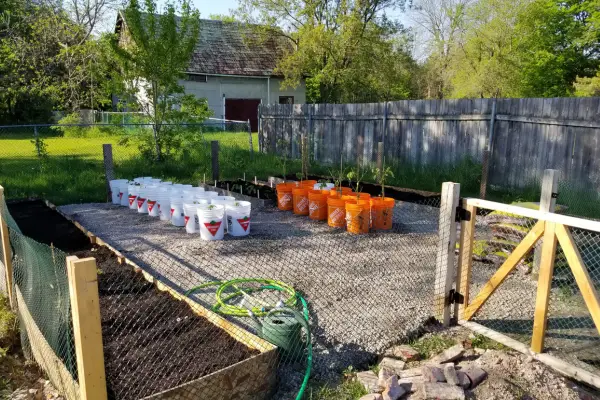
Disease Resistance and Toughness
If your area has issues with pests, humidity, or fungal disease, look for varieties noted for their resilience. Thick-walled peppers often resist rot better, and open-pollinated or hybrid types may be bred for specific disease resistance.
Choose Between Open-Pollinated, Heirloom, and Hybrid Varieties
When selecting pepper seeds, you’ll often see terms like open-pollinated, heirloom, and hybrid. These labels tell you more than just how the pepper grows—they affect things like seed saving, plant performance, and consistency. Understanding the difference can help you make better choices for your garden goals.
Open-Pollinated Peppers
Open-pollinated (OP) varieties grow true to type, meaning seeds saved from your plants will produce similar peppers in future seasons, as long as there’s no cross-pollination. These varieties often have great flavor diversity and are perfect for seed-saving gardeners or those who enjoy experimenting with traits over time.
Heirloom Varieties
Heirlooms are a type of open-pollinated pepper that have been passed down through generations, often for 50+ years. They’re prized for their unique flavors, colors, and stories. Many heirlooms are regionally adapted and offer excellent taste, but they can sometimes be less uniform or less disease-resistant than hybrids.
Hybrid Varieties (F1)
Hybrids are the result of controlled crossbreeding between two parent varieties to produce plants with specific traits, such as higher yields, disease resistance, or earlier ripening. While you can’t reliably save seeds from hybrids (they won’t grow true), they’re a great choice if you want consistent results and strong performance in the garden.
Top Pepper Picks by Goal
With hundreds of pepper varieties out there, narrowing your options can feel overwhelming. One of the best ways to choose is by focusing on your gardening or culinary goals. Whether you’re new to growing, crafting hot sauces, or chasing unique colors and flavors, there’s a perfect pepper for you.
Best for Beginners
These varieties are easy to grow, productive, and forgiving for first-time gardeners:
- Jalapeño – Reliable, early to mature, and versatile in the kitchen.
- Bell Peppers – A classic sweet pepper that performs well in most climates.
- Cayenne – Slim, spicy, and productive; great for drying or sauces.
Best for Hot Sauce Makers
If you’re making fermented sauces, vinegar-based blends, or fiery condiments, these peppers bring bold flavor and serious heat:
- Ghost Pepper (Bhut Jolokia) – Intense heat with fruity undertones; best for extreme sauces.
- Habanero – Fruity, floral, and very hot—ideal for tropical-style hot sauces.
- Lemon Drop (Aji Limon) – Bright citrus flavor with medium heat, great for zesty sauces.
Best for Smoky Flavors
These peppers shine when roasted, grilled, or smoked, adding rich depth to your dishes:
- Poblano – Mild heat and earthy flavor; excellent roasted or stuffed.
- Chipotle (smoked jalapeño) – Deep, smoky heat; available dried or can be made at home.
- Pasilla – A dark, dried chili with mild heat and complex smoky-sweet flavor.
Best for Stuffing
Thick walls and mild flavor make these peppers ideal for stuffing with cheese, meat, or grains:
- Bell Pepper – Large, sweet, and sturdy—classic for stuffed pepper recipes.
- Hungarian – Round, sweet, and perfect for roasting and filling.
- Cubanelle – Mild and slightly sweet; often used in Mediterranean and Caribbean dishes.
Best for Unique Colors & Shapes
Looking to grow something eye-catching? These varieties offer visual flair along with great taste:
- Hallow’s Eve – Deep black and purple colored foliage with peppers that ripen to cascading black and orange colors, really tasty, super beautiful.
- Purple UFO – A UFO-shaped pepper that ripens to deep purple with mild to medium heat.
- Bishop’s Crown – A three-pointed, bell-like shape with a sweet and tangy flavor.
Best for Short Seasons
If you’re gardening in a northern climate or have a limited growing window, these peppers mature quickly:
- Early Jalapeño – A fast-growing variety perfect for shorter summers.
- Birds Eye Chilis – These peppers are hot and grow fairly well in cooler climates
- Habanero – You’ll get at least one good harvest with a habanero plant
Final Tips for Selection
Now that you’ve explored the wide world of pepper varieties, you might still be wondering: Which ones should I actually grow? The truth is, the best approach is often to experiment, stay organized, and let your taste buds (and growing conditions) guide you. Here are a few final tips to help you make confident, well-rounded choices:
Try a Mix: Grow a Few Types for Diversity
Instead of putting all your energy into one variety, grow a mix that covers your main goals—something sweet for snacking, something spicy for sauces, and maybe one that just looks cool in the garden. This not only keeps things exciting, but also helps ensure that at least a few varieties thrive in your conditions.
Start with Seed Packs or Seed Swaps
Buying a handful of seed packs is a simple, low-cost way to explore different peppers. Local seed swaps, gardening groups, and specialty seed sellers often carry unique or heirloom varieties you won’t find in big box stores. Trying something new each season can lead to delicious discoveries. You could also search local pepper seed suppliers. For a great list of companies selling seeds in Canada, check out this article.
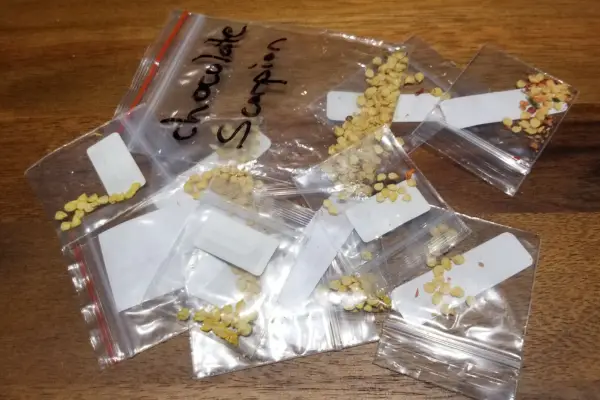
Keep a Garden Journal for Flavor and Yield Notes
As you grow more peppers, start recording what you liked, and didn’t—about each variety. Was the heat level too high? Did the plants struggle in your climate? Did one type become your go-to for cooking? Keeping notes helps you refine your selection year after year.
Plan for Harvest Time and Use
Think ahead to how and when you’ll use your harvest. Do you want early peppers for fresh summer eating, or late-season heavies for preserving? Knowing your intended use, whether that’s stuffing, drying, pickling, or sauce-making, can help you choose varieties that deliver when you need them most.
Final Thoughts
There’s something incredibly rewarding about finding the perfect pepper match, whether it’s the one that makes your favorite hot sauce sing or the sweet variety your family can’t stop snacking on. Growing peppers is more than just planting and harvesting; it’s a flavorful journey shaped by your taste, your climate, and your curiosity.
Don’t be afraid to experiment. Try a new variety each season, swap seeds with fellow growers, or share your harvest with friends and neighbors. The pepper-growing community is full of passionate, knowledgeable people who love talking spice—and there’s always something new to learn.
As you gain experience, explore lesser-known varieties, support seed diversity, and try saving seeds from your favorites. Each pepper you grow helps keep this vibrant, colorful crop thriving for generations to come.
Mike P
Welcome to The Hot Sauce Guy! I’m Mike, your guide to the spicy world of hot sauces and the creator of Spicy Riffs Hot Sauce. From Canada, I share the hottest reviews, pepper-growing tips, and sauce recipes with a touch of rock and roll.
My passion? Crafting the perfect blend of heat and flavor. Whether you’re here for the fire or the flair, get ready for a journey into the world of spicy delights.
Let’s turn up the heat together!
About Us
